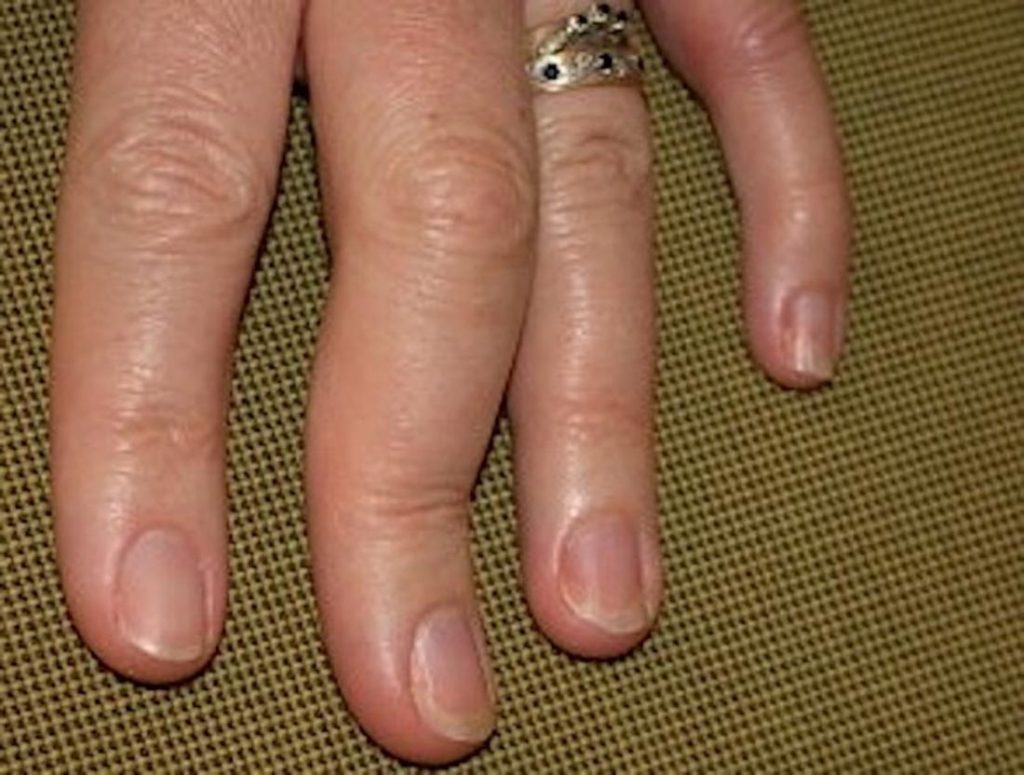Psoriatic arthritis, an autoimmune disease can occur itself in many ways.

Source: Medical News Today
In and around your joints, psoriatic arthritis can cause pain, swelling, and stiffness. It frequently affects persons who already have psoriasis on their skin. As a result of these Patches of red, uplifted skin along with white and silvery flakes appears. Psoriasis can sometimes be preceded by arthritis symptoms. Psoriatic arthritis is an uncommon condition in which persons do not have any visible psoriasis patches.
Psoriasis and psoriatic arthritis are both autoimmune diseases. Our immune system defends us from disease and infection. The immune system becomes confused with autoimmune diseases and attacks healthy portions of the body. People of any age can be affected by these illnesses. Psoriatic arthritis affects about one out of every five people who have psoriasis.
Symptoms
Psoriatic arthritis can occur itself in many ways. People frequently experience two or more of these symptoms, which can range in severity from moderate to severe.
Because of inflammation inside a joint, one of the main symptoms is pain, swelling, and stiffness. Inflammatory arthritis is the medical term for this condition.
Inflammation is a typical part of a healthy immune system’s toolkit. To combat infection, the body sends fluid, primarily blood, to a specific location of the body. Inflammation can cause pain, swelling, and stiffness in joints when someone has inflammatory arthritis.
The following joints are the most typically affected: neck, back, shoulders, elbows, wrists, fingers, knees, ankles and toes.
What are some of the signs of psoriasis?
Psoriasis comes in a variety of forms. Chronic plaque psoriasis occurs mostly. As a result of these Patches of red, uplifted skin along with white and silvery flakes appears. It can appear anywhere on the skin, although the elbows, knees, back, buttocks, and scalp are the most prevalent sites.
Pitting is a symptom of psoriasis that causes little circular dents in the finger and toenails. Nails can also change color, thicken, and pull away from the tip of your finger.
Causes
You may be more prone to develop psoriatic arthritis if you acquire genes from your parents or grandparents. If you have genes that put you at risk for this disease, the following factors could make it worse:
- An infection,
- an accident, or an injury
- Overweight
- smoking
There’s also the element of chance, and it’s possible that you won’t be able to pinpoint exactly what caused your disease. People cannot catch psoriasis or psoriatic arthritis from one another since they are not communicable.
Treatment
Psoriatic arthritis has a variety of symptoms, which necessitates a variety of treatment choices. Some are only for symptoms like pain and swelling, while others can treat the illness and alleviate symptoms.
Because people react differently to different therapies, you may need to experiment with a few different options to find what works best for you.
Treatment options for arthritis include:
- non-steroidal anti-inflammatory drugs (NSAIDs)
- steroid injections into affected joints
- disease modifying anti-rheumatic drugs (DMARDs)
- biological therapies.
Treatment options for psoriasis include:
- creams and ointments
- retinoid tablets
- phototherapy(ultraviolet light therapy)
- DMARDs and biological therapies that are used for arthritis can also help.





